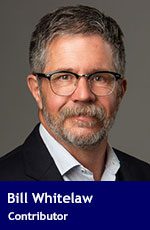Premier Smith should create a parallel panel of energy players from the constituencies neglected in the first kick at the cat
 Here’s an idea, Ms. Premier.
Here’s an idea, Ms. Premier.
But first, some reflection.
You’re all about competitiveness – and driving to where Alberta needs to be as a competitive energy jurisdiction. As an avowed libertarian, you have a particular set of views on how the state gets involved in the market.
I’m pretty sure you told your recently appointed panel of oilpatch experts that as they get a grip on Alberta’s energy future, they need to pay attention to its competitiveness as a first principle. In other words, figure out how the market might work without a lot of state interference.
Now, it’s a talented bunch you’ve appointed. There’s plenty of know-how and experience when it comes to competitiveness in David Yager, Hal Kvisle, Carey Arnett, Bob Curran and Phil Hodge.
And most people will agree that “competitiveness” will be the foundation of our future energy success – to 2050 and beyond.
But look at the way global capital is flowing these days, premier, and understand how competitiveness is being defined differently. Competitiveness is, in many ways, a fluid state of being; it moves, shifts and dances to complex melodies that change both subtly and dramatically.
Alberta’s conventional oil and gas development will continue to attract the big bucks. That’s the panel’s forte; its area of core expertise. That’s good because oil and gas will be with us for a long time to come.
But the rules are changing. The “caveats of capital” are in a state of even more fundamental flux.
In fact, if conventional oil and gas development doesn’t up its game on a broad range of performance indicators, capital will just look like a shimmering mirage in the desert of despair Alberta risks becoming.
Talk to your own sustainability bureaucrats. Talk to your team at Invest Alberta. Talk to the various Alberta folks in the province’s global offices.
They’ll tell you how capital is flowing to jurisdictions known for their systems thinking – places where conventional fossil fuel development is playing a highly integrated role with other energy systems.
So, to the panel’s composition: it’s solid at its core. But it is also missing several key elements that, if ESG investors were scanning headlines as they are wont to do, they might be puzzled as to why the province didn’t display a little more thoughtfulness in terms of the panel’s overall make-up.
You may be tempted to scorn the global ESG movement as something way too woke and not here to stay, but then you may as well create another panel mandated to stop plate tectonics.
Think about this phrase: “permission to produce”. It’s a useful way to contemplate the socioeconomic, political, and technological frameworks within which Alberta’s oil and gas producers will be asked to operate into the future. It doesn’t matter how much foot stomping you do.
It’s about how effectively we frame that conventional sector’s vitality and commitments to new “conditions of combustion” within a larger “system of systems” framework that will create a steady stream of bucks coming here, among other sustainability-driven performance strictures.
Just look at why the World Petroleum Council selected Calgary to host this fall’s 24th triennial congress with the theme of net zero and energy transitions. Calgary was chosen because the world is looking to it, Alberta, and Canada for something that smacks of progress and a human energy system.
So, future competitiveness is a more nuanced, more textured dynamic than it has ever been. And there are more hooks in the cost of capital than there have ever been. And we have plenty of people in Alberta who understand that.
But they’re not showing up as part of the energy futures panel. The panel, as it exists, represents the orthodoxy of how things have been done for the last 50 years. That’s important because their experiential perspectives are foundational to an evolving oil and gas sector. The peaks and valleys of the commodity price cycles that have wracked the provincial economy in the past will continue. But they could be different in terms of impact – less impactful, say – with a different view of how to navigate the market conditions that produce them. As a libertarian, you’ll appreciate the risks associated with a full hand of the same cards in a sector that takes prices, not makes them.
But as competent as the panel is, it doesn’t completely represent the province’s energyscape or its peoplescape – now or into the future.
And as much as you and the panel members insist the process is an open table – that all interested parties will be consulted – you’re not grasping the critical difference between being a consultor or a consultee.
You see, such panels and their composition are all about power structures. Who has power … and who does not.
By not embedding other critical stakeholders – the wind players, the solar players, the geothermal players, the First Nation communities, the young professionals, the rural community – in the panel’s structure at the outset, you have normalized the fact the panel as constituted has all the power. It gets to define who is consulted, and, more importantly, who isn’t. In other words, you’re placing Alberta’s future energy blueprint in the hands of a cohort representing only a certain segment of our energy system spectrum.
And what about women? Some 80 per cent of the panel is male, but in our sector – in all forms of energy – women, in many ways, are outdoing men in creative and innovative thinking.
You blew it big time, Ms. Premier.
So, how about this?
Create a parallel panel of other energy players from the constituencies neglected in the first kick at the cat. It will undertake a similar engagement process – one that will define the boundary conditions for Alberta’s energy future – including competitiveness. You can pretend it was your concept all along.
Give this second panel the same timelines and same resources and let them go.
So, two panels. Running parallel processes to develop a framework for Alberta’s energy future.
They can talk to the same folks; consult the same ministries and departments. That won’t matter because the perspectives and insights gleaned will be a function of the trust stakeholders will put in the process. In a perfect world, both panels will enjoy trust because you, as premier, have shown some creativity in imagining the power of possibilities in two such panels. But it is guaranteed that the second panel will ask different questions than the first – shaped by a different set of values and perspectives – and provide different recommendations.
Then, when the two plans are complete, you can put them to a referendum and let Albertans decide the energy future in which they see themselves. Or you can blend them into a singular plan that represents the best of both worlds – with a strong foundation of future competitiveness and create an energy future in which all Albertans can see themselves participating in.
It could be an interesting exercise in democracy that will allow you and other UCPers to see that a whole other Alberta exists – one not so putatively overwrought about the province’s relationship with Ottawa.
Alberta has a choice as it marches into a new competitive future: united we stand, or divided we fall.
Bill Whitelaw is the Managing Director of Strategy & Sustainability with Geologic Systems.
For interview requests, click here.
The opinions expressed by our columnists and contributors are theirs alone and do not inherently or expressly reflect the views of our publication.
© Troy Media
Troy Media is an editorial content provider to media outlets and its own hosted community news outlets across Canada.



